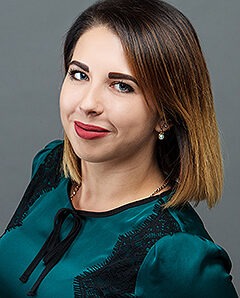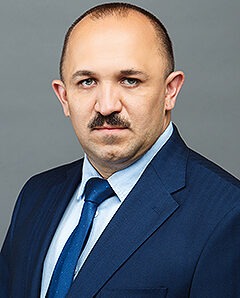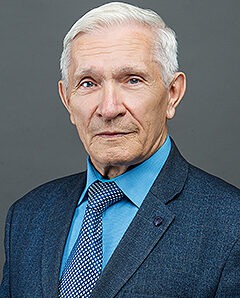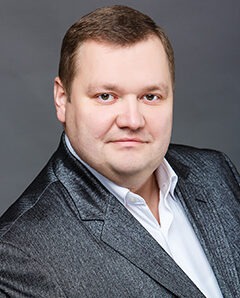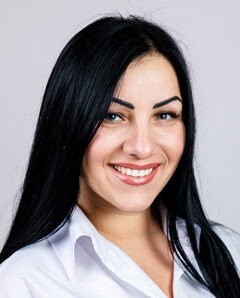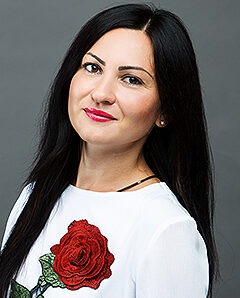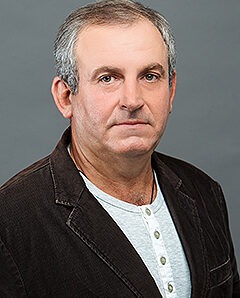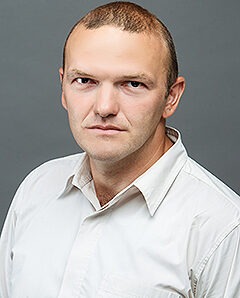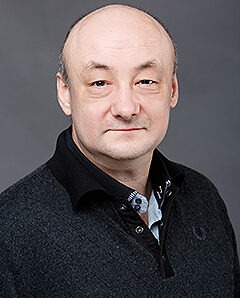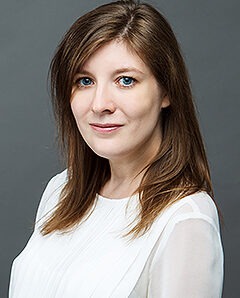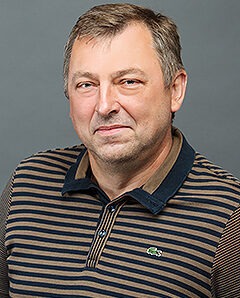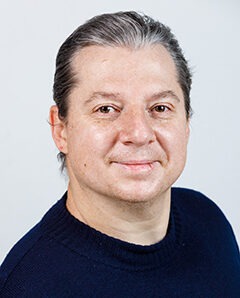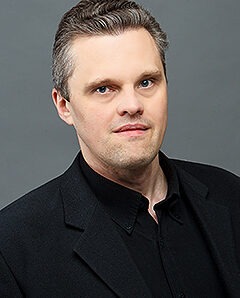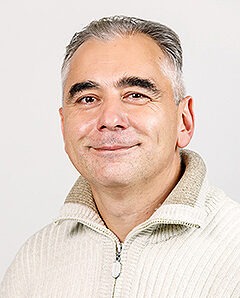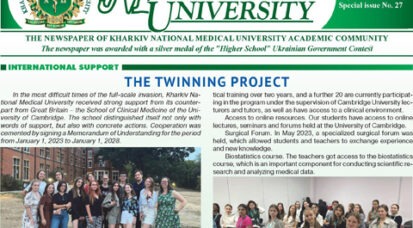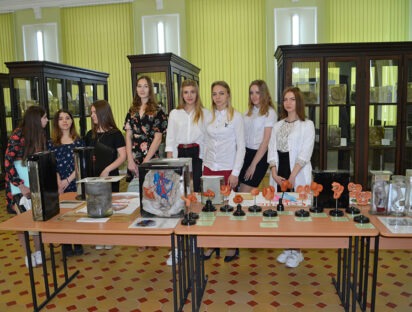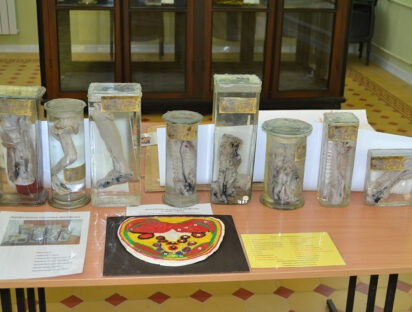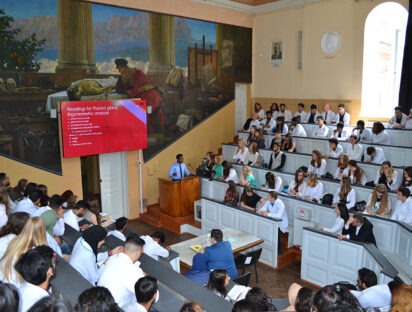About us
The Department of Human Anatomy of Kharkiv National Medical University was founded in 1804. The main activities of the department include educational, scientific, methodological work.
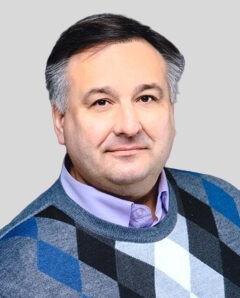
- History of the department
- Educational process
- Scientific work
- International Activity
- Educational Museum
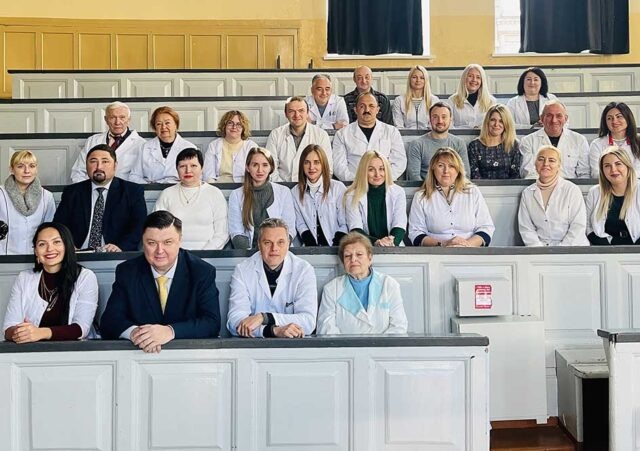
The Department of Human Anatomy was established together with the creation of a medical faculty within the Kharkiv Imperial University, which was founded by the initiative of V.N. Karazin. It should be noted that the medical faculty of the university became the first medical higher educational establishment on the territory of Ukraine. The development of the educational and scientific base of the department, the formation and growth of its scientific potential are inextricably linked with the names of the heads of the department, professors I.D. Knigin, А.S. Venediktov, P.А. Naranovich, Т.S. Illinskiy, D.F. Lambl, M.O. Popov, O.K. Belousov, V.P. Vorobiyov, R.D. Sinelnikov and others who created well-known morphological schools in Ukraine and abroad. Wherever and in whatever positions the employees of the department worked, they were always characterized by high professionalism, a sense of pride for their educational institution and professional responsibility for their work. Modern teachers who generously share their knowledge with the younger generation of future doctors took these features of the moral code of the doctor as example.
215 years of existence of the Department of Human Anatomy is the history of development and formation of the Kharkiv Anatomical School as an integral part of medical science in Ukraine. Today the Department of Human Anatomy of KhNMU is located in a separate two-storey building (with a total area of about 3 thousand square meters) of original architecture of the late XIX century, built in 1887 by a special project for the Department of Normal Anatomy (Anatomical Building) of Kharkiv University. Today in the anatomical building are located: departmental anatomical museum of KhNMU; lecture hall-amphitheater for 250 seats; classrooms; research laboratories and premises for teachers, laboratory assistants and technical staff of the department. The departmental anatomical museum was created along with the founding of the department. Today it has four halls, with a total area of more than 600 square meters, where about 4,500 anatomical specimens are exhibited, which demonstrate the normal human body structure and some pathologies. The lecture hall-amphitheater, along with excellent acoustics, has original architectural features. In particular, in the center of the auditorium there is a marble table for the demonstration of natural preparations during the lecture, on its walls there are bas-reliefs of Hippocrates, M.I. Pirogov, portraits of V.P. Vorobiyov and R.D. Sinelnikov. The main value of the auditorium is a unique mural-panel (more than 30 square meters) “Leonardo da Vinci’s anatomy lesson”. It was painted in 1918 by famous Kharkiv artist Alexander Lyubimov, a student of I.I. Repin. It depicts the outstanding scientist-enceclopedist, genius artist of the Renaissance Leonardo da Vinci while he is dissecting and studying the corpse.
Since September 2018, the head of the department is Doctor of Medical Sciences, Professor O.Y. Vovk.
The Department of Human Anatomy of KhNMU is known as a center for the development of new methods of embalming the whole human body and its organs. The world-famous textbook “Atlas of Human Anatomy” was created here, which has been used by students and doctors of Ukraine, and some foreign countries for over 80 years. Thanks to academician Vorobiyov, who has proposed a new scientific method of macromicroscopic research in anatomy, and professor Sinelnikov, who has continued this teaching at a new level, the department became the cradle of a large school of anatomists for not only Ukraine but also other countries.
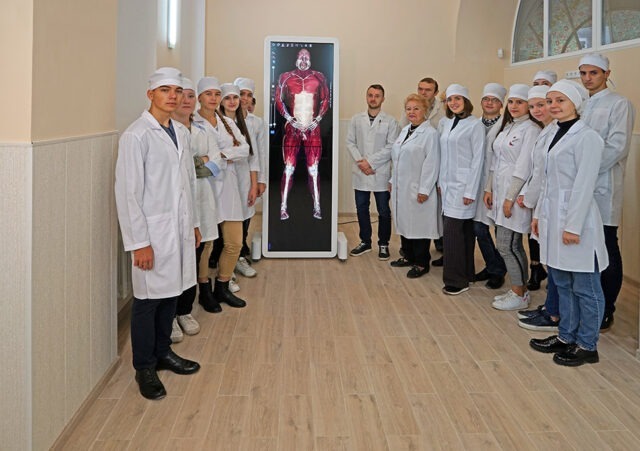
For teaching human anatomy, a unified syllabus was created that has taken into account many-years research and pedagogical experience of the department – anatomical school with 215-years history. The training process uses methods of teaching anatomy that were established by famous scientists – academician V.P. Vorobiyov and professor R.D. Sinelnikov. Implementing the concept of higher medical education reform to improve the training of medical personnel, the department, along with traditional teaching methods – lectures and practical classes using demonstration corpse material, uses new technologies – computer control of knowledge and skills, educational videos, visual aids from new synthetic materials and other. the Since 1992 the department has a computer training center and computerized classrooms, which aim to increase the effectiveness of theoretical training of the students in connection with the introduction by Ministry of Health of Ukraine license exams “Step-1”, “Step-2” and “Step-3.” The programs and bank of computer tests and tasks allow using the computers in the teaching process and for monitoring students’ knowledge. In recent years, the department has prepared and published in Ukrainian language manuals “Osteology”, “Arthrology”, “Myology” and “Splanchnology” with anatomists of other medical universities according to the Bolonskiy process, as well as a series of teaching materials. Since 2019, the department has a Training and Research Center “Practical Morphology”, which is equipped with unique equipment for studying human anatomy.
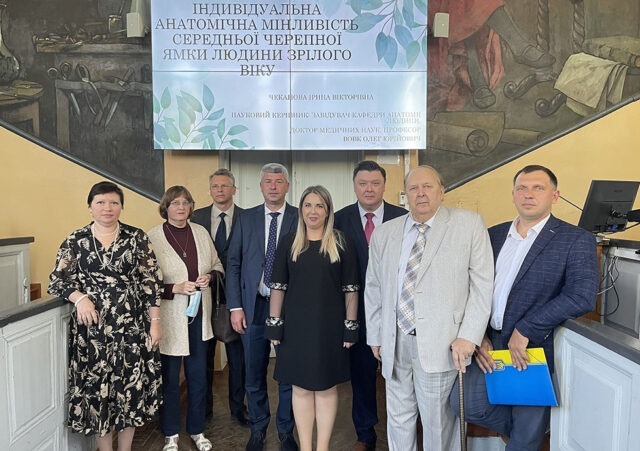
Scientific activity is related to the work of many departments, morphological and clinical laboratories of Kharkiv, other cities of Ukraine and the world and devoted to the investigation of the individual features of the structure of human head areas. The Department actively participates in international conferences, symposia and congresses in Ukraine and abroad. Department of Human Anatomy has had close scientific connections with the departments of anatomy of other universities in Ukraine.
According to the results of scientific research for the last five years 2 doctoral and 8 candidate thesis have been defended. The contribution of the department is more than 420 publications, 90 articles, 325 theses, 17 patents, 3 monographs, 95 oral and poster presentations and participation in 65 scientific forums. Students who have prepared more than 90 reports and received 40 awards of various levels take an active part in the scientific work of the department.
Main areas of research
The staff of department carries out research on the topic “Individual anatomical variability of craniotopographic features and spatial relationships of human head areas in the post-embryonic period of ontogenesis” 2018-2022 (№ of state registration 0118U000954)”.
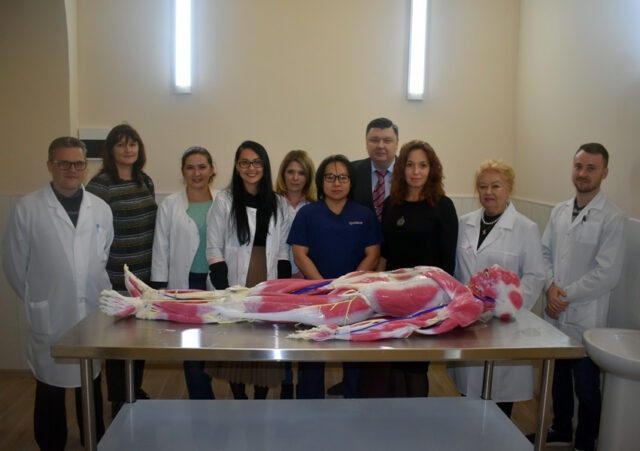
Teaching staff of the Human Anatomy department annually present morphological research at symposiums, conferences, seminars held by IFAA (International Federation of Associations of Anatomists), American Association for Anatomy, Anatomical Society (Great Britain).
Faculty members annually improve their teaching professional skills in trainerships abroad (Germany, Poland, Great Britain, Sweden).
The department maintains contacts with the developers of the virtual table “Anatomage” and synthetic corpse material “SynDaver” (USA) to improve the work with the latest technologies.The department cooperates with the developers of the “3D Organon” (Australia) to optimize software for teaching human anatomy in higher medical institutions of Ukraine.
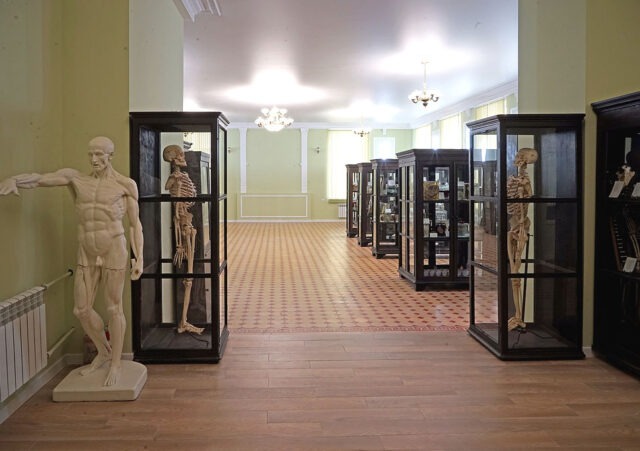
The educational museum was founded in 1804 simultaneously with the department establishment. The first museum preparations were purchased in Moscow, St. Petersburg and France. Gradually, the number of specimens increased, both due to natural preparations made at the department, and artificial, made of wax (Vannoti, Barminsky).
Human Anatomy department is actively involving 1st and 2nd year students to the activities of the Science club. According to the curriculum, every month the teaching staff of the department conducts trainings and seminars in the lecture hall of the Human Anatomy department. Every year students of the science club take an active part in various conferences in Ukraine and abroad. Students are particularly involved in the reconstruction of museum specimens, helping teachers to carry out the dissections of corpse material at various stages.

